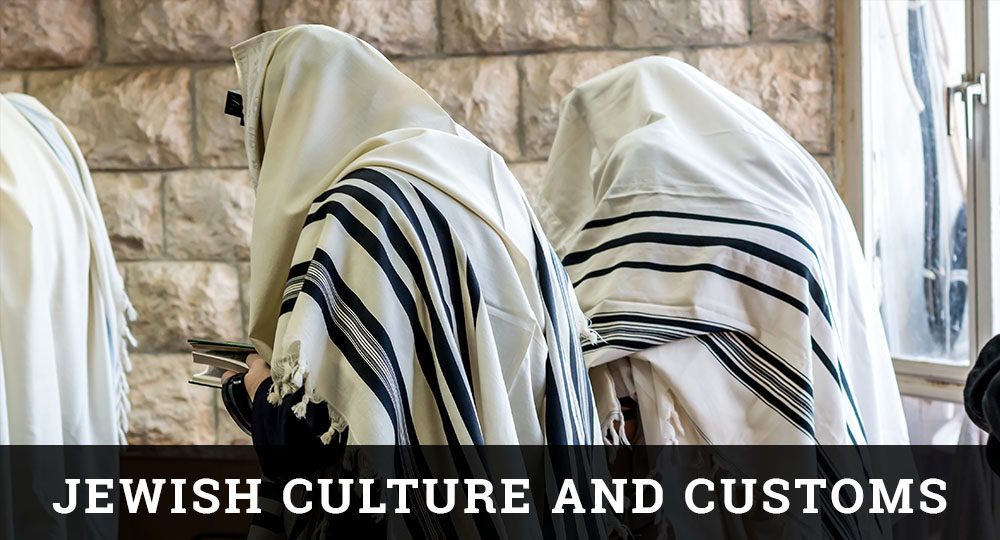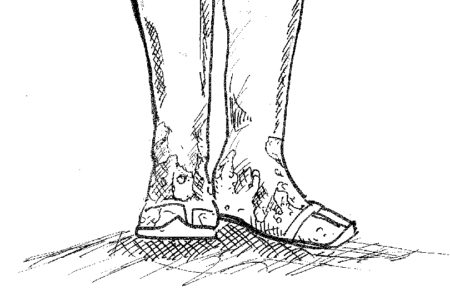Dressed for Worship Part Two
The Tefillin
As Tevya, the milkman in Sholem Aleichem’s story Fiddler on the Roof, considered various practices unique to his Judaism, he turned to the audience and asked, “Why do we do the things we do?” And, stroking his beard contemplatively, he answered his own question with a simplistic yet profound explanation: “In one word—tradition!” For years, tradition has been the cornerstone of many Jewish practices. It has been woven into Judaism like a thread into fine fabric.
Daily, at first light (except on the Sabbath and high holy days), Orthodox males (and in some cases, females) don the traditional religious garb, always making sure to put the items in just the right places, in just the right order. Each worship experience serves as an opportunity to identify afresh with their people and their God.
In the last article, an explanation of the tallit was given. Judaism teaches that the thing used most often is put on first. This article explains the next item of religious garb, the tefillin.
Tefillin: Where Are They?
Tefillin (Heb., prayer), or phylacteries (Gr., amulet), consist of two small black leather boxes. Attached to these one- to two-inch cubes are long leather straps two to three feet in length. One of the boxes is placed on the forehead (shel rosin), and the other is placed on the arm (shel yad).
The shel yad contains passages of Scripture written by a scribe on one piece of parchment. These passages, taken from the Torah (the five books of Moses), are Exodus 13:1–16, and Deuteronomy 6:4–9, 11:13–21.
The shel rosh contains the same Scriptures, but they are written on four separate pieces of parchment, the Exodus portion being divided between verses 10 and 11. Each tiny parchment is inserted into one of four separate compartments in the cube.
Tefillin: Why Are They Worn?
Interpreting these Torah passages literally, the rabbis of old fashioned the tefillin to comply with the command to make them “a token upon thine hand, and for frontlets between thine eyes” (Ex. 13:16). Symbolically, they are to remind the worshiper of his commitment and consecration to the God who redeemed His people after four centuries of bondage in Egypt. They are also a reminder that God owns the worshiper’s heart and intellect. For this reason, shel yad points to the heart, and shel rosh is worn on the head.
Originally worn all day long as a constant display of commitment, tefillin were outlawed in ancient Rome. Today they are donned as part of the morning worship, either at home or in the synagogue.
Tefillin: How Do You Put Them On?
The shel yad is placed just above the elbow with the box pointed toward the heart, always on the weaker arm. Thus, if a person is right-handed, the cube is placed on the left arm, and vice versa. This rule comes from a rabbinic interpretation of Deuteronomy 6:8–9, which teaches that the hand that writes should be the hand that binds.
The leather strap is wrapped around the arm seven times. This practice is based on the seven Hebrew words in Psalm 145:16, “Thou openest thine hand, and satisfiest the desire of every living thing.” Ashkenazic (eastern European ancestry) Jews wrap the strap clockwise; Sephardic (Mediterranean ancestry) Jews wrap it counterclockwise. The strap is then wound three times around the ring and middle fingers, forming the Hebrew letter for Shaddai, meaning Almighty. The three windings recall the passage in Hosea 2:19 and 20, which contains God’s three-fold commitment to Israel: “I will betroth thee unto me forever; yea, I will betroth thee unto me in righteousness … I will even betroth thee unto me in faithfulness.”
As the worshiper begins his daily ritual, he recites the following blessing in Hebrew: “Praised be thou, O Lord our God, King of the universe, who has sanctified us through His commandments and commanded us to wear tefillin.” The shel rosin is then placed on the forehead between the eyes, just below the hairline. A special knot is made to secure the tefila (singular) on the head. A blessing—“Praised be Thou, O Lord our God, King of the universe, who has sanctified us with His commandments and commanded us concerning the law of tefillin”—is then recited.
Zeal has never been an attribute found wanting in Judaism. Indeed, those who adhere to its many traditions do not lack courage or conviction, and Christians can learn a great deal from them. Yet a built-in problem arises whenever the traditions themselves replace the reasons for them. Matthew 23:5 records that flaw as stated by the Lord Himself: “But all their works they do to be seen of men; they make broad their phylacteries, and enlarge the borders of their garments” (tallit).
The writer to the Hebrews wrote, “But we see Jesus” (Heb. 2:9). Believers are admonished not to dress with outward adornments but to “put … on the Lord Jesus Christ” (Rom. 13:14) daily.
EDITOR’S NOTE: This series explores features of life and worship as practiced by observant Orthodox Jewish people.








